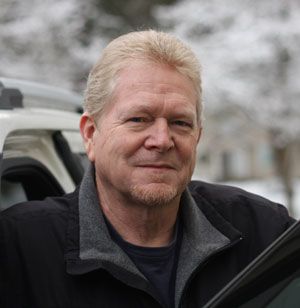Bicycle boom
Bicycle sales are “booming” along with the rise of the COVID pandemic. For whatever reason, bicycle sales have increased since the beginning of the viral spread.
Now, facing the second spring and summer of this sales phenomenon, the resulting increase in bicycle ridership is inevitable. This is always the time of year for motorists to be extra-aware of the emergence of bicycles and motorcycles. But with uptick in ridership, it’s more important than ever for four-wheelers and two-wheelers to accommodate each other for safe co-existence.
That means all of those parties must understand their rights and responsibilities, along with the inherent challenges in dealing with their differential of size and speed capabilities. But bicyclists should not force their rights among vehicles if it’s in their peril to do so and motorists should not impose their rights if it endangers the smaller, more vulnerable bicycle riders.
Unfortunately, that “give and take” tolerance is not always the norm, and the safety of bicyclists is not generally assured amongst motor vehicle traffic.
Currently, a partnership by Ford, Trek, Bosch and others is stepping in and attempting to improve that situation. Research is ongoing for V2V (Vehicle-to-Vehicle) electronic communication. When vehicles “talk” to one another, all vehicles within a zone are aware of one another’s position and speed, greatly reducing likely physical contact. The new partnership of auto, bicycle and electronic industry leaders intends to expand on V2V technology with B2V (Bicycle-to-Vehicle) communication systems. Their goal is to help vehicles communicate with bikes, scooters and infrastructure related to cycling.
This is timely given the increased interest in bike and scooter ridership since the onset of the pandemic last spring, according to Eric Bjorling, brand marketing director at Trek. “What you’ll see post-COVID is more of an awareness of the shared nature of transportation pathways, whether that’s roads, trails or streets, Bjorling told Automotive News. “COVID has accelerated and accentuated the need for B2V.”
Trek, Ford and Tome form a unique collaboration among a bike company, an automaker and a tech startup, and are working with others in the industry with similar goals for B2V standards.
“The key here is getting an agreeable standard framework for making changes to existing messages as well as what’s required or what’s optional,” said Tome CEO Jake Sigal. “Nothing we’re doing will be required equipment on a vehicle or a bicycle.”
“Not only do you have to get the bicycle and consumer device companies like mobile phones, like accessory companies, to all agree on standards, you then also have to get vehicles to accept any sort of a framework for bringing in these messages,” as Sigal explained the challenges.
The group’s members are developing prototypes — Trek, for example, is directly integrating B2V sensors into its taillight, which is designed to alert drivers of the presence of a cyclist. Ford is testing the technology as part of its advanced driver-assistance system.
COVID has boosted bike and scooter ridership in cities throughout the world. Increasing ridership has also necessitated infrastructure improvements like more dedicated bike lanes in city centers and an increased focus on cyclist and rider safety.
“We think this bike boom is sustainable, and we think that this purchase boom is actually going to dovetail nicely into a riding boom,” Bjorling said. "This work becomes even more important now than ever before, in that you're going to have more people on the roads in general.”
Readers may contact Bill Love via e-mail at precisiondriving@spokesman.com.
